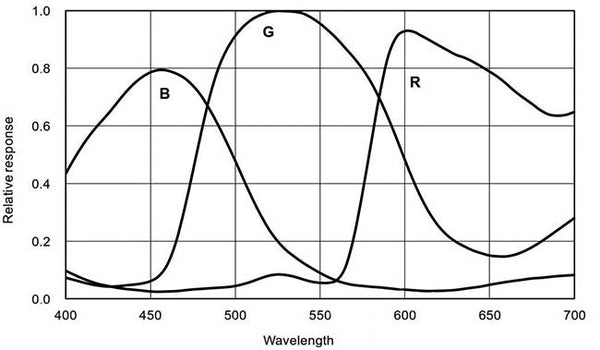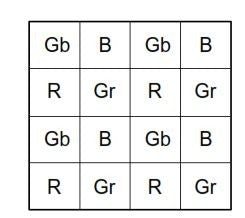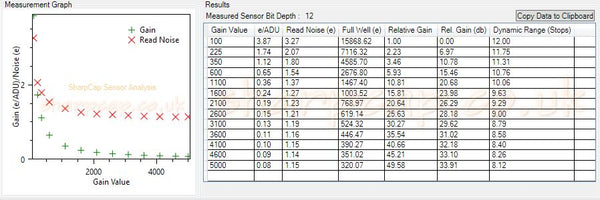The Hypercam 183C PRO TEC Cooled camera is the next step when it comes to astro-imaging, with the 20mp Sony IMX183 sensor, amp glow reduction and high sensitivity, for extremely smooth, detailed images.
The IMX183 is one of the most sensitive Back Side Illuminated BSI sensors available, with very low read noise, suitable for both deepsky and solar system imaging with ROI.
The PRO TEC COOLED Version has the following features:
- 4GB DDR3 RAM Memory Buffer for smoothest performance with mini-PCs
- Thermoelectric Cooling (TEC) max -45C below ambient temperature*
- Temperature sensor, with data available in realtime.
- Heated optical window to prevent dewing and fogging.
- Internal, replaceable, rechargeable dessicant cartridge, plus one spare.
- Two extra USB2.0 ports and internal USB2.0 hub to connect filter wheel and guide camera.
- ROI (Region of Interest) for cropped higher speed solar, lunar and planetary imaging.
- 4K Mode (cropped).
- Binning.
- Amp glow reduction.
- * Separate 12v power supply included to power TEC with choice of USA, EU or UK Plug socket.
SPECIAL OFFER! FREE 1 YEAR SharpCap PRO License! Includes ultra-accurate polar alignment assist, deepsky CMOS exposure time optimisation assist, live stacking for EAA/Video astronomy, live darkframe and flat frame subtration.
Click here for more SC PRO features. Just download the latest SharpCap, connect your Altair Astro camera, register when the screen pops up, and sign up for your free license! Download SharpCap 3.0+ now to take advantage of this special offer.
Easier than a DSLR and no "astro modding" required: Hypercam is much easier to use and focus than a DSLR, thanks to the live preview mode which shows uncompressed video at full resolution. You can see a tiny star-point clearly in real-time, because there is no video compression like with a DSLR video stream. Unlike a DSLR, there's no need to modify your camera to capture detail in red hydrogen wavelengths, because it has no red blocking filter in the way. There are no clumsy power connectors which drop out easily, no firmware to fight with your software, no mirror to lock up, and a "true" uncompressed RAW mode output. You get exactly what this Sony sensor "sees" from without alterations.
TEC cooling: Cooling reduces random thermal noise during long exposure imaging. The internal Thermoelectric cooling system (TEC) unit is controlled with your imaging apps, allowing you to set the temperature (which is recorded in the .FITs file header). The Hypercam is designed for consistent, reliable deepsky imaging at up to -45 below ambient temperature. For the IMX183 Sensor, the most appropriate cooling temperature at gain 400 is approx. – 10/15°C Absolute, beyond which, no real gains are made.
Anti-fogging heated optical window. Every precaution has been taken to address the most common issues with cooled cameras. The optical window is warmed by special heaters to stop fogging and condensation at low temperatures. To inhibit sensor-frosting, the sensor chamber is sealed, and dry air purged during assembly in a special atmosphere. The sensor chamber has a replaceable stainless steel desiccant cartridge with spare. The dessicant cartridge can be recharged by placing it in an oven at 120C for a couple of hours after removing the mini O-ring.
4GB DDR3 RAM: The Hypercam PRO series also has an unprecedented 4GB on-board frame buffer to improve data transfer stability at high frame rates (to reduce dropped frames) and to increase compatibility with a wider range of PCs. The improved buffers give a more consistent data transfer rate over USB2.0 and USB3.0 allowing longer imaging sequences with small notebooks, stick PCs, or mini-PCs.
Low read noise BSI sensor. The Sony IMX183 CMOS sensor is ExmorR rated, and Back Illuminated (BSI). BSI technology moves the sensor circuitry behind the pixel, so unlike conventional sensors the light path is not blocked, resulting in higher quantum efficiency than a traditional CCD sensor. Read noise is low, and there is no smear or “blooming” on bright stars.
Try deep-sky "lucky" imaging. The low read noise let’s you stack shorter exposures to take advantage of the low read noise, reducing atmospheric aberrations and tracking errors or wind vibration. The more frames you stack, the smoother the image becomes, and the higher the cumulative dynamic range. In this way, long cumulative exposure times of many hours can be achieved with modest equipment. The result is a smoother, sharper image with more detail.
Video Astronomy/EAA Friendly. The Hypercam IMX183 sensor is not only desirable for Deepsky Imaging - it's also great for Video Astronomy or "EAA" Electronically Assisted Astronomy. All thanks to the 20mp resolution, high sensitivity, and amp glow reduction technology. What's more you can use the Live Stacking features in the AltairCapture software or SharpCap PRO. All-sky time-lapse imaging or video is easy with a DSLR lens and optional Hypercam Lens Adapters (product code: CLA-EOS or CLA-NIKON).
The technical stuff:
Pure RAW video and stills mode and "digital" RGB output modes for better post processing: The Hypercam sensor ADC can deliver 12bit RAW files, which are stretched to 16 bit. In RAW mode analog (on-sensor) gain is used for ultra low read-noise images. Because the output is completely "RAW" in analog mode, there is no partial "downstream digital" processing like with a DSLR or other cheaper Chinese cameras of similar design, resulting in true RAW mode for the best deepsky performance. True RAW mode allows greater flexibility and consistency in processing large stacks of frames for deepsky "lucky" imaging, where the camera's low read noise can be taken advantage of. Either .FITS image or .SER video files are captured in their purest form for later processing in your software of choice. Of course for Video Astronomy / EAA use, you can select RGB Mode and capture .AVI files, or just view the screen with full access to white balance, gamma, contrast and histogram controls, just like any other camera.
USB3.0 speed and USB2.0 reliability: USB3.0 gives much faster transfer speeds than USB2.0 cameras, however, if like most imagers, you prefer to use longer and more flexible USB2.0 cables for better tracking and reliability with a USB2.0 hub, no problem! The Hypercam is completely compatible with USB2.0 or USB3.0. Just plug and go!
Two rear USB2.0 ports for accessories. Save on cabling by connecting your guide camera, filter wheel, or focuser to the rear USB2.0 ports and internal powered USB2.0 hub.
SharpCap PRO: Altair Astro have worked closely with SharpCap developer Robin Glover since 2015, to fully integrate Altair cameras with SharpCap at a basic level. Now, Sharpcap PRO enables even more features with this camera, such as software driven polar alignment (more accurate than any other method we know of), live flat-frame subtraction and live darkframe subtraction. The fast, accurate polar alignment feature in SharpCap PRO is a life-saver for imaging, minimising setup time.
Support & warranty: Altair delivers proper English-speaking support with a 2 year manufacturer warranty against defects in materials and workmanship. New users should visit Altair Camera Google User Group where you can get answers to technical questions. The group is also a great area to share tips and techniques, to get the best out of your camera. The AltairCapture software interface supports most European languages including English, German, French, Indonesian, Japanese, Korean, Polish, Russian, Chinese, Spanish, Thai, and Turkish.
File formats: The camera can be fully controlled in AltairCapture and SharpCap to output uncompressed .AVI and .SER video files for solar system imaging, as well as all common still image formats such as .JPEG .PNG .TIFF .BMP, and .FITS (for deepsky imaging) to mention just a few. The Hypercam supports 8bit or 12bit output. The 12 bit output mode can be used for deep sky imaging with less frames needing to be stacked and a wider pixel intensity range. The sensor is extremely sensitive and a good candidate for video astronomy, especially with small refractors. Find out more about bit depth here. Find out more about video & file formats here.
The Hypercam platform with Trigger Mode: The Hypercam platform supports “Trigger Mode” to make long exposures of over 5 seconds easier to control. With most cameras, in normal video mode, you have to wait for an exposure to complete before the camera will accept, say a command to abort the frame, for clouds, aircraft, or an alignment issue, like kicking the tripod and so-on, changes in gain, exposure time, or re-aligning or refocusing. For long exposures, normal video mode is inconvenient, especially for video astronomy and deep-sky imaging, however in Trigger Mode, you can stop the camera instantly (even if you are half way through a long exposure) change the settings, and re-start the capture.
Included in the box:
- Camera body with internal cooling fan, heat-sink, and front female M42x0.75mm T-Thread interface (17.5mm backfocus).
- Onboard 2port powered USB 2.0 hub (USB3.0 input, 2x USB2.0 ports output).
- 12v Power supply for use in TEC mode (camera will work in fan mode without it too).
- 1.8m High-speed USB3.0 cable. (Camera is also USB2.0 compatible).
- 2" OD Nosepiece with standard 2" M48x0.75mm filter thread on the front. (code ALTAIRH-2IN).
- Built-in UV-IR Blocking Filter, AR coatings. (Removable for sensor cleaning).
- Plastic screw-on dust cap.
- Allen key for tightening the C-Thread insert.
- Optional waterproof impact armour case with foam interior to hold camera and accessories.
- Note: This camera does not come with software in the box. To operate the camera you will need to download the latest camera drivers at cameras.altairastro.com (opens new window)
Sensor & performance specifications:
* Based on average user reports. May be revised as we get more data. The shorter the exposure duration, the faster the frame rate. An expensive PC does not guarantee a fast frame rate because board architecture varies.
Software & OS support:
- Drivers & AltairCapture software download (Windows only): cameras.altairastro.com (opens new window).
- Driver support: PHD2, AltairCapture, SharpCap
- AltairCapture OS support: Win XP 32bit / Vista/ 7/ 8/ 10 (32 & 64 bit)
NOTE: Windows 10 is recommended for best performance, with 2013 or later USB host controller v1.0 or later.
- SharpCap (a 3rd party application) is also fully supported and tested with native drivers.
- USB Port & Cable: 3.0 USB Cable, 1.8m cable (USB2.0 also supported at low frame rates).
- ST4 Port & Cable: Standard ST4 Opto-Isolated, 1.5m cable, iOptron, Celestron, Skywatcher SynScan GOTO.









